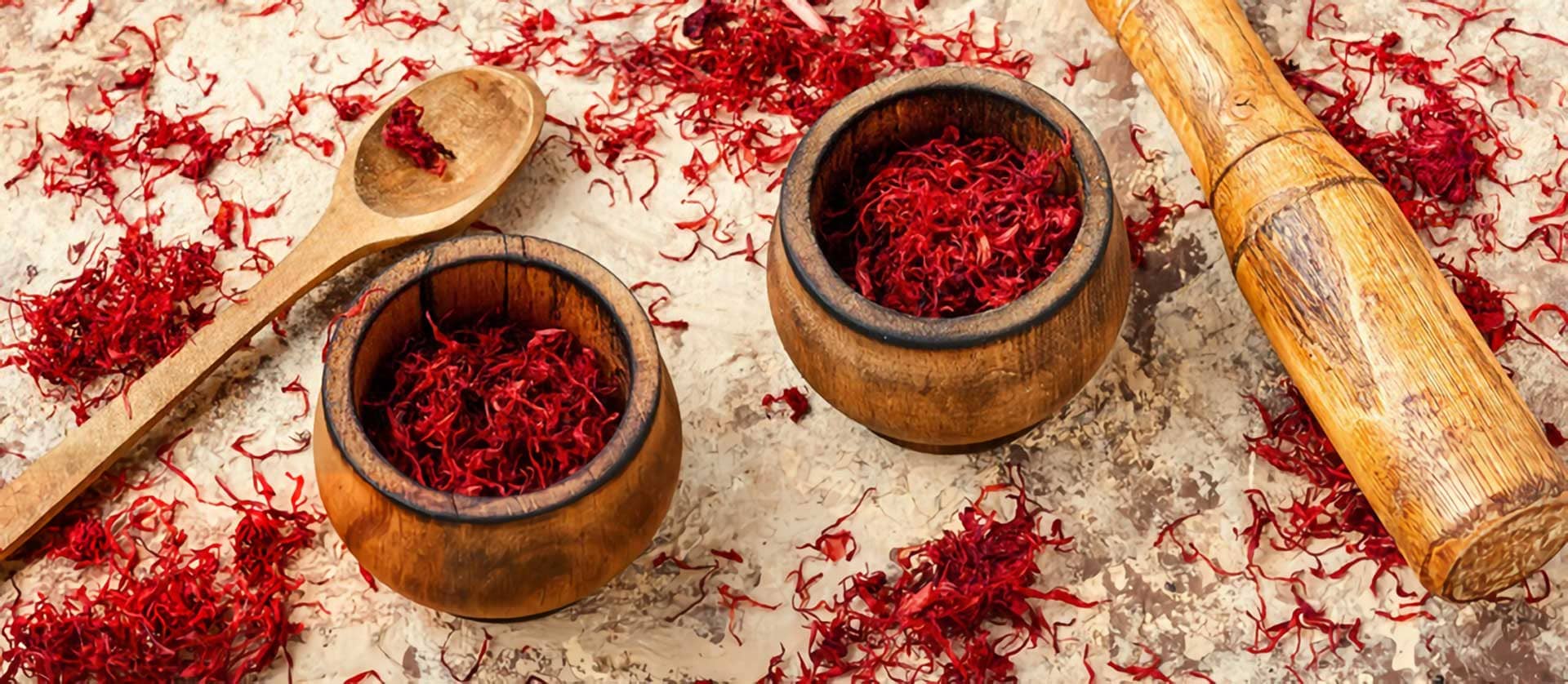Iranian Saffron Nanoemulsion
Iranian saffron
Saffron is a spice obtained from the stigmas and dried creams (Crocus Sativus L) of Crocus Sativus plant and one of the important applications of this red spice is in the food industry (transfering flavor and aroma color to food and drink) as well as use in cooking and pharmacy (due to its safety properties). The history of saffron plant production and breeding dates back to 2500 years ago.
Today, saffron is an export commodity of Iran’s food industry in the world, which under the name of red gold accounts for about 79% of the world’s saffron volume, while this expensive product is sold raw and has much added value. Considering that Iran is considered as the main and primary source of saffron production in the world and a large volume of this production is mass-transported to neighboring countries and packaged there and re-distributed throughout the world and on the other hand due to the depletion of energy reserves and the very high price of saffron, it is exported as red gold. So new techniques and technologies are used to reduce the consumption of raw materials and increase production efficiency in order to improve the quality of the final product. One of the main concerns of innovation is the abovementioned invention.

Due to the expensive energy resources and the depletion of these resources, the sale of raw materials of such valuable and high-quality products should be avoided, so in the abovementioned invention, one of the newest and most portable methods of producing saffron nanoemulsions has been done. On the other hand, research has shown changes in the taste and color composition of saffron during storage since crocin, which is also known as the color index of saffron, is very sensitive to oxygen and oxidizes rapidly in its vicinity. In addition, increasing temperature leads to spontaneous oxidation of this substance. This sensitivity is such that during the processing and storage stages, the amount of crocin and the intensity of saffron color is reduced. Among the methods used to preserve the properties of such materials, nanotechnology in the food, pharmaceutical and medical industries have been considered by researchers in the scientific community. With the ability to encapsulate, protect and release functional compounds, they focus their efforts on nanotechnology to solve nutrition-related problems, in which nanoemulsion technology, especially for the construction of encapsulation systems, to prevent degradation and preserve materials bioactive are very suitable. The technique used in this project is a probe ultrasonic homogenizer and has a high efficiency in the production of Iranian saffron nanoemulsion (Crocus sativus) to reduce droplet size in a small amount. Advantages of using ultrasonic method compared to other mechanical methods in producing nanoemulsion include less energy consumption, less emulsifier use and also more uniform emulsion with smaller droplet size. This product is the first to be produced and the important point in this methodology is avoiding to use any chemicals or abnormal preservatives. In this method, after preparing a solution of saffron and span 80 extract, it is added dropwise to the solution containing N-Dekan and Tween 80, then the nanoemulsion is prepared using an ultrasonic homogenizer with a probe. Production of Iranian saffron nanoemulsion (Crocus sativus) using ultrasonic probe homogenizer technique increases the production efficiency of saffron. Saffron produced by the above method has a more ideal taste and smell than the macroscopic state of saffron, color and coloring properties. Compared to ordinary saffron, it has a more lasting and stable taste than ordinary ground saffron, which ultimately consumes the amount of saffron in terms of area per unit volume and saves the amount of active ingredient consumed.
The FDA of Iran has granted Delwa an official license
Delwa has obtained the necessary health licenses from the Ministry of Treatment and Medical Education of Iran and the Iranian Food and Drug Administration to produce saffron plant nanoemulsion. Nanoscale, efficiency, safety, and stability of this product have all been approved by this organization.

Production Objectives of Iranian Saffron Nanoemulsion
- Reduceing the excessive consumption of this rich food
- Improving quality in order to produce the final product
- Increasing the amount of taste and color, smell and all the organoleptic properties of saffron
- Producing the smallest nanometer size possible in terms of stability in saffron essential oil
Applications of Iranian Saffron Nanoemulsion
- Food Industry Engineering Factories
- Exporters of Saffron
- Catering and Food Centers
Considering the above mentioned properties, this product will be highly regarded by all food industry factories, caterers and other places that use saffron in their production stages, which in addition to improving the properties of production materials will reduce production costs for the centers will be mentioned. Also, saffron exporters to other countries can increase the volume of exports by introducing and selling this product to the destination countries. This knowledge-based product is the result of 6 years of teamwork of three faculty members of the Science and Research Branch of the three faculties of Agricultural Sciences and Food Industries of the Science and Research Branch, Faculty of Environment and Natural Resources of the Science and Research Branch and Veterinary Faculty of the Science and Research Branch With the cooperation of esteemed professors, Dr. Hamed Ahari, Dr. Sidamir Ali Anvar, Dr. Sara Allahyaribeik, Engineer Mehdi Rahimian and Dr. Sima Moradi, the main members of the project and with the material and spiritual support of the esteemed company of Aria Industry and Commerce has been achieved.The mentioned product has been completed with the completion of 3 extracurricular projects with contract numbers 14555, 14557 and 14599.





















